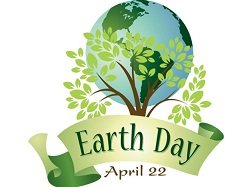Mother Earth Day - continued

It was twenty years after Stockholm before the global community really began to look at the state of the planet seriously. The Rio conference (Rio de Janeiro Summit) in 1992 saw 178 member states adopt the ‘Statement of Principles for the Sustainable Management of Forests’. This was the first major conference where the main issue discussed was sustainable development. It proved to be a starting gun for an exponential growth in the development of efforts to conserve the environment. Conferences and political declarations were finally resulting in documents that were clear and practical for implementing measures to sustain the environment.
The UN celebrates the observance of Mother Earth Day each year as part of the Harmony with Nature initiative; a day focused on discussion and sharing of information, indicators, data, criteria and ideas to advance a holistic approach; recognising the interconnected life we are part of.
The following is part of a statement from the United Nations Harmony with Nature platform.
The General Assembly has widely acknowledged that the world's depletion of natural resources and rapid environmental degradation are the result of unsustainable consumption and production patterns which have led to adverse consequences for both the Earth and the health and overall well-being of humanity. The scientific community has well documented evidence that our present way of life, in particular our consumption and production patterns, has severely affected the Earth's carrying capacity.
Loss of biodiversity, desertification, climate change and the disruption of a number of natural cycles are among the costs of our disregard for Nature and the integrity of its ecosystems and life-supporting processes. As recent scientific work suggests, a number of planetary boundaries are being transgressed and others are at risk being so in a business-as-usual world. Since the industrial revolution, Nature has been treated as a commodity that exists largely for the benefit of people, and environmental problems have been considered as solvable through the use of technology. In order to meet the basic needs of a growing population within the limits of the Earth's finite resources, there is a need to devise a more sustainable model for production, consumption and the economy as a whole.

Devising a new world will require a new relationship with the Earth and with humankind's own existence. Since 2009, the aim of the General Assembly, in adopting its nine resolutions on Harmony with Nature, has been to define this newly found relationship based on a non-anthropocentric relationship with Nature. The resolutions contain different perspectives regarding the construction of a new, non-anthropocentric paradigm in which the fundamental basis for right and wrong action concerning the environment is grounded not solely in human concerns. A step in this direction was further reaffirmed in the outcome document of the United Nations Conference on Sustainable Development (2012), entitled "The future we want":
"We recognize that planet Earth and its ecosystems are our home and that "Mother Earth" is a common expression in a number of countries and regions, and we note that some countries recognize the rights of nature in the context of the promotion of sustainable development." United Nations
Only a few decades ago, the above statement and its development mission would have appeared alien to the global political establishment. Although good words, and in many ways good deeds, are a huge step in the right direction, there is still a lot of ground to cover; ground that to some may seem impassable if the grip is not loosened on the notion that commercial parity can be maintained.
It is estimated that over a billion people participated in activities around the globe on Earth Day. The events were drawing attention to the climate, environmental degradation and a call for urgent action.
A love for the world and life is developing globally. Voices, young and old, are increasing in number and volume. If the world can talk, it is talking right now, through the hearts and minds of many. The good choices can only be made by those who see and feel the reasons why, and it is our leaders and new leaders who need to embrace the World as they would embrace a loved one.
“Nature is the greatest treasure that we have. It deserves all the help it can get.” Sir David AttenboroughIn November this year COP 26, the annual global climate summit, will be held in Glasgow.




